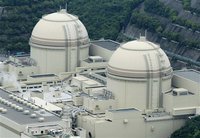Fukushima undermines Japanese Honor Code
The disaster at nuclear power plant Fukushima-1 was a "huge tragedy caused by human error that could have been foreseen and avoided," says the report of the parliamentary commission investigating the causes of the accident that occurred after the earthquake and tsunami on March 11, 2011.

This is the third report on the causes of the disaster. In the first report the owner of the station blames the tsunami, in the second the parliament blames the owner, while in the third one "Greenpeace" blames the Japanese government of collusion with regulators of the industry.
The report, published on July 5, is very critical with respect to the former Prime Minister Naoto Kan. The authors wrote that the disaster was caused by human error and that the former and current governments, regulatory authorities and the operator Tokyo Electric Company (TEPCO) have failed in their duty to protect human life and society.
The authors of the report believe that the root cause is in the organization and management systems that proceeded from the erroneous logic in the decision-making and wrong-doing, rather than a specific person. In their view, the main error was that the regulators (supervising government institutions) have not met the international safety standards. They spoke of the ignorance and arrogance unacceptable when working in the nuclear power sector.
The report also notes that many errors were made at the station due to the negligence of its administration. Although TEPCO stated that the station was able to withstand strong seismic shocks and reactors have not suffered after the earthquake with the strength of nine on the Richter scale, it cannot be ruled out that the first reactor had been damaged after the earthquake and was destroyed by the tsunami hit, the report states.
The document was signed by ten specialists of private research institutes that surveyed 1,167 people to determine the causes of the nuclear disaster. Experts point out that nuclear power plants in Japan "surprised" them with their helplessness in the face of human error, not to mention the natural factor. They emphasize that the representatives of the nuclear power industry lobbied the government in its own interests and maintained the belief in "the myth of its security."
It should be noted that the study of the causes of the disaster made by order of the owner of "Fukushima-1" - energy company TEPCO, on all counts justify its actions. But interviews of the plant employees show that the company gave the order to evacuate all staff, which was stopped only after the intervention at the highest level. After the accident, the operator actions have been repeatedly criticized in terms of lack of a clear plan of action and indecision. It is no coincidence that "Fukushima-1" was nationalized in June.
There is also a report of the experts of "Greenpeace" published on March 6, and there is also no mention of "an accident resulting from natural disasters." "Greenpeace" points to three main causes of the accident. The first one is the imperfect early-generation reactors of Mark 1 type (1960), the type of boiling water reactors with a weak security system. The second - TEPCO falsification of a report in 2006 that the Agency for Nuclear and Industrial Safety (NISA) has approved, extending the life of the plant for 10 years. The third one is that the real risks were known, but the Japanese authorities and the operator ignored them, in collusion.
The publication of the Japanese parliament coincided with the launch of the third unit of the NPP "Oi" - the first of the 50 reactors from the ones decommissioned after the accident at "Fukushima-1." All of them are tested for reliability and safety. This is a huge energy loss for Japan, whose nuclear power provides for 30 percent of electricity needs.
The six reactors of "Fukushima-1" had been badly damaged after the earthquake and tsunami that destroyed their cooling systems, which led to the release of radioactive water. Approximately 80,000 people were evacuated within 20 kilometers due to the increase of radioactivity. It is believed that the complicated and dangerous operation to remove the damaged fuel and dismantle the station will take nearly four decades.
Lyuba Lulko
Pravda.Ru
Subscribe to Pravda.Ru Telegram channel, Facebook, RSS!




